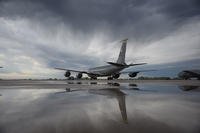The Army's top enlisted leader said the service would have already adopted a replacement for its ineffective Universal Camouflage Pattern had Congress not moved to halt costly service-specific camouflage patterns.
The Army was poised to announce the results of its multi-year camouflage improvement effort nearly a year ago, but congressional language in the National Defense Authorization Act for Fiscal 2014 called on the Pentagon to put an end to the services branding their ranks with unique camouflage uniforms.
The cost-cutting directive is understandable given the current budget pressures, but it's also a major setback for the Army's effort to provide soldiers with effective individual camouflage, said Sgt. Major of the Army Raymond Chandler III in a recent interview with Military.com.
"We've been working on a study for several years now to determine a pattern Chandler said.
"So we were very comfortable with our camouflage study, and we heard that Congress was concerned about our cost and the Secretary of the Army said ‘were going to wait to see what the NDAA says and what Congress directs us to do.' And when that was passed in December, we've gotten the directive from Congress and now were looking at how we apply that directive to our future camouflage program."
As a result, the Army is now considering adopting the Marine Corps desert and woodland patterns as one option for the new camouflage strategy, but it is by no means a done deal, Chandler said.
"I can't tell you yes or no because there are other things that have to happen to that before we move forward. But what I do know is that we are going to make a decision that provides the best cover and concealment for our soldiers in line with being fiscally responsible," he said. "We are sincerely concerned with finding the patterns that best protect our soldiers, because it really is about force protection for the Army and the Marine Corps.
"And from my perspective, it's less about that for the Navy and Air Force. They are generally on ships or around an airfield whereas both the Marines and the Army are engaged in direct combat and concealment in camouflage is very, very important."
Another part of the camouflage strategy involves uniform officials creating a digital pattern made up of the color scheme used in Crye Precision LLC's MultiCam pattern and testing it in various locations across the country, according to a source familiar with the plan.
The Army has been considering replacing UCP with Crye Precision's MultiCam – a pattern that has demonstrated consistent performance in test after test and was selected in 2010 for soldiers to wear in Afghanistan.
But Army officials don't want to pay Crye $24.8 million in royalties to use MultiCam, the source said.
Crye Precision was among the finalists of the Army's Phase IV camouflage testing effort. Other finalists included ADS, Inc., teamed with Hyperstealth, Inc.; Brookwood Companies, Inc.; and Kryptek, Inc. When the testing was complete, there was no definitive winner. None of the four patterns clearly outperformed one another through all the test environments.
MultiCam, however, has been strong performer in camouflage testing over the years.
The pattern has been a favorite of U.S. Special Operations Command for almost a decade. The Army selected the MultiCam in 2010 as the clear winner over several other patterns to issue to soldiers deploying to Afghanistan.
It was actually congressional pressure that prompted the Army to launch its camouflage improvement effort in 2009.
Pennsylvania's Democratic Rep. John Murtha, who was then chairman of the House Appropriations Subcommittee on Defense, pushed the service to look for a better camouflage pattern after receiving complaints from sergeants about the UCP's poor performance in the war zone.
Some test community officials maintain that the 2004 adoption of the UCP was a mistake that could have been avoided, saving the Army billions of dollars on uniforms and matching equipment.
Two separate studies performed by Army scientists from Natick Soldier Systems Center, Mass. -- one completed in 2009 and the other in 2006 -- showed that the UCP performed poorly in multiple environments when compared to other modern camouflage patterns.
In both studies, MultiCam outperformed UCP.
Critics of the UCP maintain that the service has spent $5 billion on uniforms and equipment all printed in the inadequate UCP. The Government Accountability Office estimates that the Army will have to spend another $4 billion on uniforms and equipment over the next five years if it selects its new family of camouflage patterns.
"We've made uniform changes in the past; I don't really want to go into who made those decisions and why because frankly I wasn't a part of the process back then," Chandler said.
"We'll have a decision here sometime in the future, and I don't think it's going to be a decade from now. But you have to do what Congress tells you. The appropriations bill is a law, and we have to comply with the law.
"So now that we've got a change in how we've done business, we've got to apply that to our process and figure out what the next step forward is. And I would expect the secretary and the chief to come forward with their decision on how we move ahead some time here in the next several months or so."
-- Amy Bushatz can be reached at amy.bushatz@monster.com
-- Matthew Cox can be reached at kris.osborn@monster.com





























